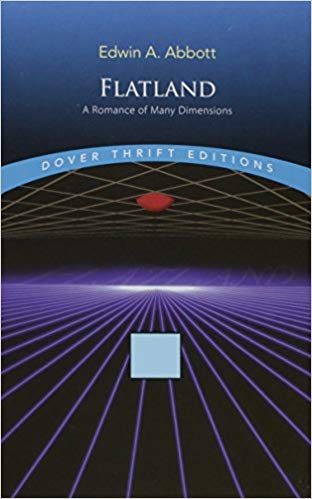
Would you be willing to try another one of Alan Munro’s performances? It's as if the authors have found new scenic overlooks which offer the viewer a new and greater perspective. It may seem strange, but I couldn't help thinking of Lewis' "The Great Divorce" because both books encourage on to stretch the imagination and consider possibilities from perspectives not usually presented. What other book might you compare Flatland: A Romance of Many Dimensions to and why? The story is fantastic! I love stories which expand the imagination and encourage the reader to consider the world from different perspectives. What made the experience of listening to Flatland: A Romance of Many Dimensions the most enjoyable? Since I was reading along with the book, I saw the error, but if I was only listening, it would have been a little confusing. He would simply read these as thirty-two or thirty-three.

My biggest critique of the narration is that Alan Munro would occasionally stumble when presented with mathematical expressions like 3² (three to the second power) 3³ (three to the third power). In someways, that makes Flatland as relevant, revolutionary and prophetic a piece today as it was when published in 1884. Abbott wrote the novella Flatland during a period of women's suffrage and a rigid class-based hierarchy. Still, Abbott plays a very significant role in the development of science fiction as a reasonable way to address and criticize current social problems. As a satire, however, while it loosely follows a very Swiftian formulation (Flatland = England Lineland = Lilliput Spaceland = Brobdingnag), it isn't as well developed as Gulliver's Travels. I can't see how it can be improved.I give Abbott props for prophetically working out some of the fundamentals of the fourth dimension and dimensional progression 30 years prior to Einstein's general theory of relativity.

It is in the public domain, I believe, which may account for it. I notice another version has just been released on audible and I cannot understand why when this one exists. This is a very well done production as well. But in addition to the interesting ideas, the plot unfolds nicely, and we come to care about our main character. This book illustrates that difficulty in a way we can fully understand by dealing with a 2 dimensional creature, but more than that, the quest to understand beyond what is accepted, and the roadblocks both internally and in one's society, make this an interesting little drama that comments on the nature of understanding and of knowledge and our ability (or inability) to accept that there is much, much more than we know. It is like trying to really understand color if you have always been blind. In theory, one can understand dimensions, but to actually move into another one, to truly understand and visualize existing in more than 3 dimensions, is really difficult. Can you really imagine the 4th or 5th dimension?


 0 kommentar(er)
0 kommentar(er)
